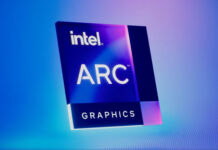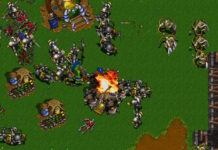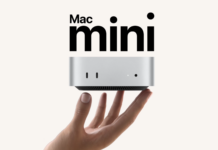IBMs Roadrunner är fortfarande den snabbaste superdatorn i världen när nu den senaste top500 listan publicerats av Top500.org. Roadrunner dominerade förra topplistan men inför den senaste uppdateringen såg det ut som att Cray XT5 Jaguar som hittas i Oak Ridge National Laboratory skulle ta över toppositionen. Men man föll precis kort med ett prestandavärde på 1.059 petaflop/s i Linpack testet. Roadrunner som i sin tur går att hitta i Los Alamos National Laboratory höll fast vid sin förstaplats med 1.105 petaflop/s. Båda systemen används av avdelningar i amerikanska Departement of Energy (DOE), vilket stämmer in på hela 7 av de 10 högst rankade superdatorerna.
Läs mer om den nya listan i pressmeddelandet nedan;
Jaguar Chases Roadrunner, but Cant Grab Top Spot on Latest List of Worlds TOP500 Supercomputers
MANNHEIM, Germany, BERKELEY, Calif., and KNOXVILLE, Tenn.The 32nd edition of the closely watched list of the worlds TOP500 supercomputers has just been issued, with the 1.105 petaflop/s IBM supercomputer at Los Alamos National Laboratory holding on to the top spot it first achieved in June 2008.
The Los Alamos system, nicknamed Roadrunner, was slightly enhanced since June and narrowly fended off a challenge by the Cray XT5 supercomputer at Oak Ridge National Laboratory called Jaguar. The system, only the second to break the petaflop/s barrier, posted a top performance of 1.059 petaflop/s in running the Linpack benchmark application. One petaflop/s represents one quadrillion floating point operations per second.
Both of the systems are at national laboratories operated by the U.S. Department of Energy (DOE). Seven of the top 10 systems on the newest TOP500 list are located at DOE facilities. Nine of the top 10 supercomputers are located in the United States. The most powerful system outside the U.S. is the Chinese-built Dawning 5000A at the Shanghai Supercomputer Center. It is the largest system which can be operated with Windows HPC 2008 operating system.
The TOP500 list, which is issued twice a year, will again be the subject of a session at the SC08 conference being held Nov. 15-21 in Austin, Texas. Complete information about the TOP500 list can be found at: top500.org.
Just as the performance levels have increased dramatically, so have the costs of running and cooling such large systems. To help assess the energy efficiency of supercomputers, the TOP500 list is now tracking actual power consumption of supercomputers in consistent fashion. Not only is it the most powerful supercomputer, but Roadrunner is also one of the most energy efficient systems on the TOP500. Roadrunner is based on the IBM QS22 blades which are built with advanced versions of the processor in the Sony PlayStation 3. These nodes are connected with a commodity InfiniBand network.
Here are some other highlights from the November 2008 list:
- A total of 379 systems (75.8 percent) are now using Intel processors. This is virtually unchanged from six months ago (375 systems, 75 percent). Intel continues to provide the processors for the largest share of TOP500 systems.
- The IBM Power processors and the AMD Opteron family are almost tied as second most common processor family with 60 and 59 systems each (12 percent and 11.8 percent). Both had only minor changes from six months ago.
- Quad-core processor based systems have taken over the TOP500 quite rapidly. Already 336 systems are using them. 153 systems are using dual-core processors, and only four systems still use single core processors. Already seven systems use IBMs advanced Sony PlayStation 3 processor with nine cores.
- HP took over the lead in systems with 209 systems (41.8 percent) over IBM with 188 systems (37.6 percent). IBM had 210 systems (42.0 percent) six months ago, compared to HP with 183 systems (36.6 percent). But IBM still stays ahead by overall installed performance.
Highlights from the Rest of the Top 10:
- The No. 3 system called Pleiades is a new SGI Altix ICE system installed at NASA Ames in Moffett Field, Calif.., narrowly grabbing this spot with 487 teraflop/s.
- The No. 4 system is the IBM BlueGene/L system installed at DOEs Lawrence Livermore National Laboratory (LLNL), with a Linpack performance of 478.2 Tflop/s.
- At No. 5 is a newer version of the same type of IBM BlueGene/P system installed at DOEs Argonne National Laboratory and it achieved 450.3 Tflop/s.
- The No. 6 system is installed at the Texas Advanced Computing Center (TACC) at the University of Texas and recently received faster processors. Nicknamed Ranger, it is built by Sun using SunBlade x6420servers and achieved 433.2 TFlop/s.
- The No. 7 system, called Franklin, is the second new Cray XT5 system. It is installed at DOEs NERSC Center at the Lawrence Berkeley National Laboratory and achieved 266.3 Tflop/s.
- The No. 8 system is a Cray XT4 system installed at DOEs Oak Ridge National Laboratory. It achieved a Linpack performance of 205 Tflop/s.
- The No. 9 system is the enlarged Sandia/Cray Red Storm system. It is installed at DOEs Sandia National Laboratories and achieved 204.2 Teraflop/s.
General highlights from the Top 500 since the June 2008 edition:
- The entry level to the list moved up to the 12.64 Tflop/s mark on the Linpack benchmark, compared to 9.0 Tflop/s six months ago.
- The last system on the current list would have been listed at position 267 in the previous TOP500 just six months ago.
- Total combined performance of all 500 systems has grown to 16.95 Pflop/s, compared to 11.7 Pflop/s six months ago and 6.97 Pflop/s one year ago.
- The U.S. is clearly the leading consumer of HPC systems with 291 of the 500 systems (up from 257). The European share (151 systems down from 184) is settling down after having risen for some time, but is still substantially larger then the Asian share (unchanged at 47 systems).
- Dominant countries in Asia are Japan with 18 systems (down from 22), China with 16 systems (up from 12), India with 8 systems (up from 6).
- In Europe, UK remains the No. 1 with 45 systems (53 six months ago). Germany fell steeply but is still in the No. 2 spot with 24 systems (46 six months ago).
The TOP500 list is compiled by Hans Meuer of the University of Mannheim, Germany; Erich Strohmaier and Horst Simon of NERSC/Lawrence Berkeley National Laboratory; and Jack Dongarra of the University of Tennessee, Knoxville.


















